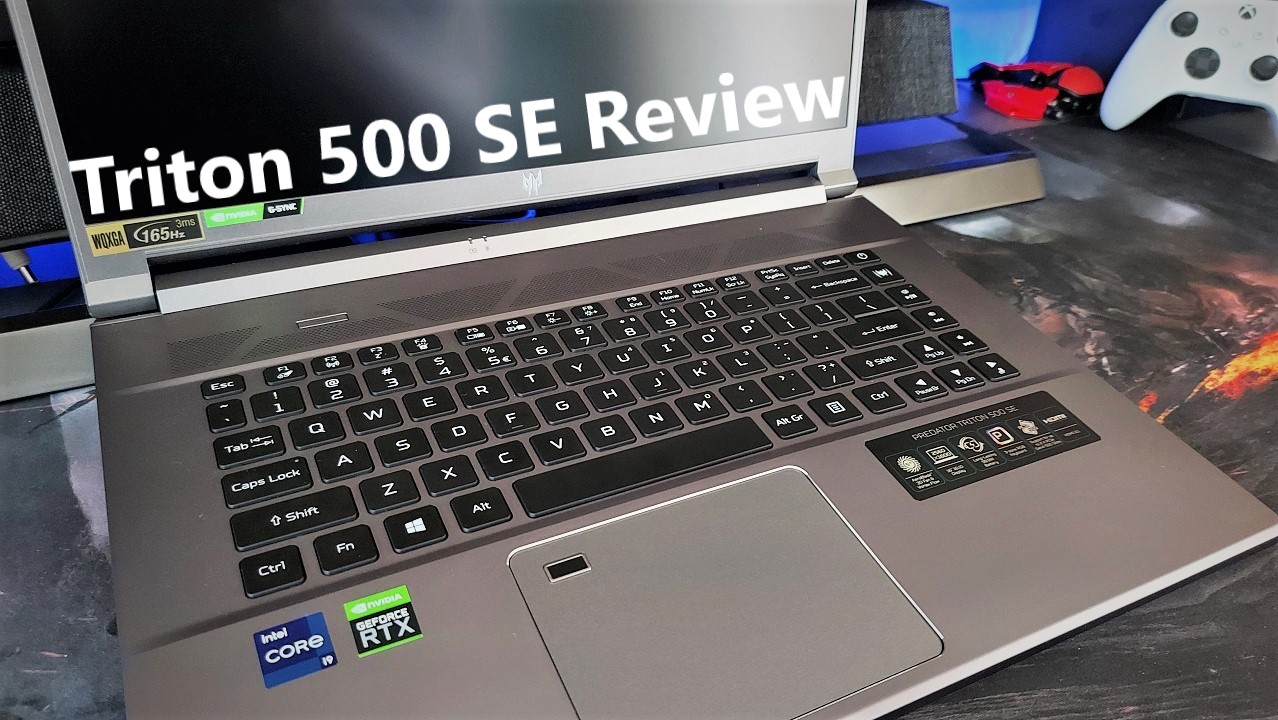Acer Predator’s Triton 500 SE is a gaming powerhouse that lives up to its special edition moniker
- Manufacturer: Acer Predator
- Model: Triton 500 SE (2021)
- Part number: PT516-51s-9215
- Price when reviewed: £2,699
- Supplied by: Acer
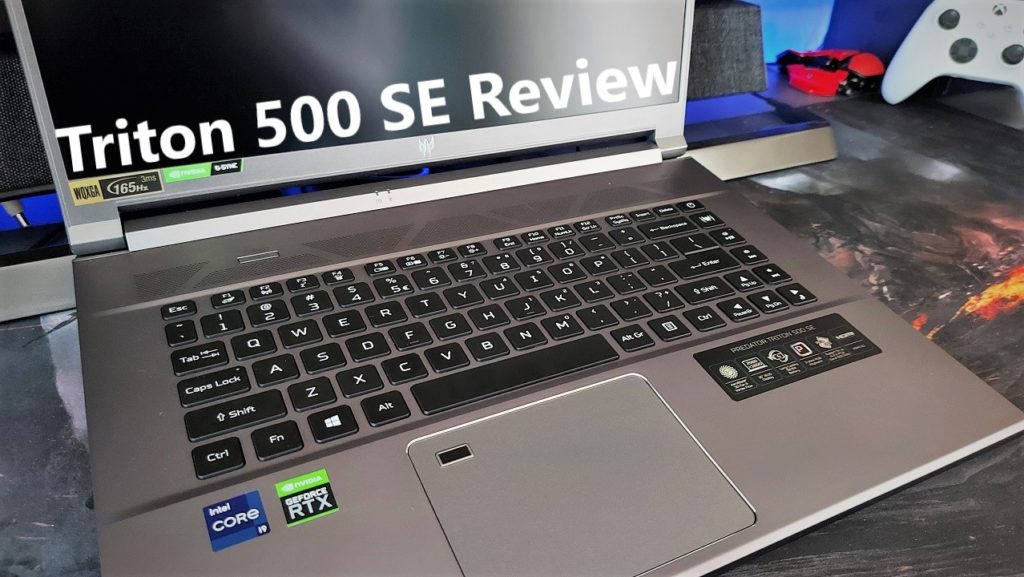
Acer Predator Triton 500 SE Review
Triton 500 SE: Overview
We recently reviewed the excellent thin-and-light Predator Triton 300 SE, which took the Triton 300 and shrank it down to 14”, adding a touch of subtle class in the design and fitting power-efficient components. The Triton 500 SE, though, is the yin to the 300 SE’s yang. It also has a slimline chassis and similar styling, but everything else has been turned up to 11 (literally, in the case of the new 11th Gen intel CPU.
The 16” display is bigger and better, with a peak brightness of 570cd/m², 165Hz refresh rate, and a 16:10 WQXGA (2560*1600) panel. The processor is a top of the line i9-11900H, the GPU is now a beastly GeForce RTX 3080 with a peak TGP of 110W, there’s 32Gb of DDR4-3200 memory, a large battery, and superfast Samsung SSDs in Raid0 configuration. Make no mistake, these are top of the line specs right here.
The CPU is one of Intel’s new 11th Gen i9 processors, and the performance is remarkably close to that of the newest Ryzen CPUs. This could easily double as a workstation system, and has more than enough power to blast through pretty much anything you throw at it.
In terms of direct rivals, the closest laptop we have tested in terms of specs and also in a slim and light configuration is the ASUS ROG Zephyrus G15, which apart from using an AMD Ryzen 9 CPU is very evenly matched. We will also be comparing performance with the excellent ASUS ROG Strix Scar 15 (which also has similar components) and last year’s Acer Predator Triton 500 with an RTX 2080 Super.
Triton 500 SE: Design and build
Much like the Triton 500, the SE has an all-metal chassis, lid and tray, and it has a reassuringly premium feel. Rather than being all-black, though, the Triton 500 SE is finished in a gunmetal grey, and apart from the large vents and exhausts on cooling duty, it doesn’t shout “GAMER” like many high-end gaming notebooks.
Design flourishes are limited to a small chrome-effect Predator logo in the corner of the lid, a tiny Predator logo in the bottom of the ultra-slim bezels around the display, and a tasteful strip of chrome surrounding the touchpad. The Triton 500 SE is a beautiful and subtle piece of engineering.
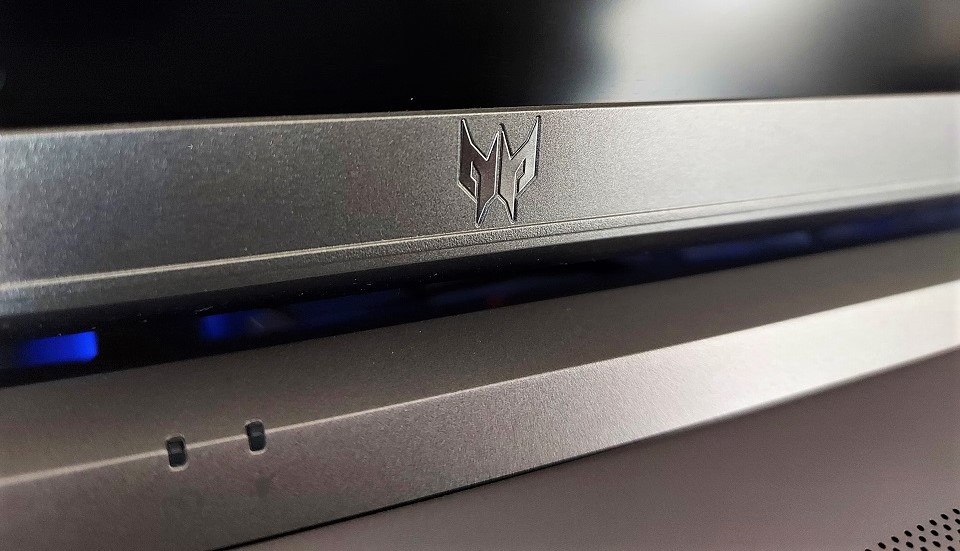
Build quality throughout is excellent, with no creaking when you apply pressure to the chassis, and the lid is very sturdy with minimal amounts of flex. I’ve tested so many Acer laptops that I just take the excellent build quality for granted, but this is Acer at its very best.
Although this is a slim laptop, the larger profile and all-metal construction mean it weighs in at 2.5 kg, which is quite heavy but manageable.
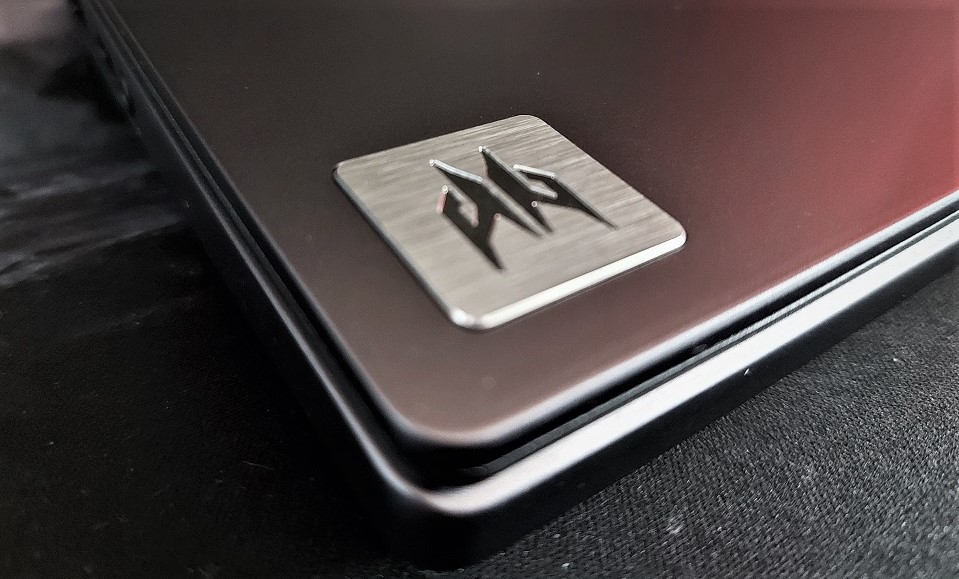
Internals and upgrades
The Acer Predator Triton 500 SE’s internals aren’t very user-accessible. You will need a T8 Torx screwdriver to remove the nine screws in the bottom of the case, and a sturdy pry tool to release the snap hooks.
Inside, the motherboard has been fitted inverted compared to most other gaming laptops, which means the only component easily accessible is the WiFi card. If you want to add or swap RAM (ours has 32 GB DDR4-3200, with a 64 GB maximum capacity) or change the SSDs, there are several additional screws to undo, as well as numerous fragile flex cables you’ll have to disconnect first. It’s not impossible, but I’d only recommend it if you are very competent and confident at reassembling electronics.
In this case, we’d recommend choosing the Triton 500 SE variant with the dual SSDs. Not only is it very awkward to reach the second M.2 SSD slot, but if you leave it to Acer they will provide two Samsung PCIe Gen 4 SSDs in a Raid0 configuration and they are ridiculously fast.
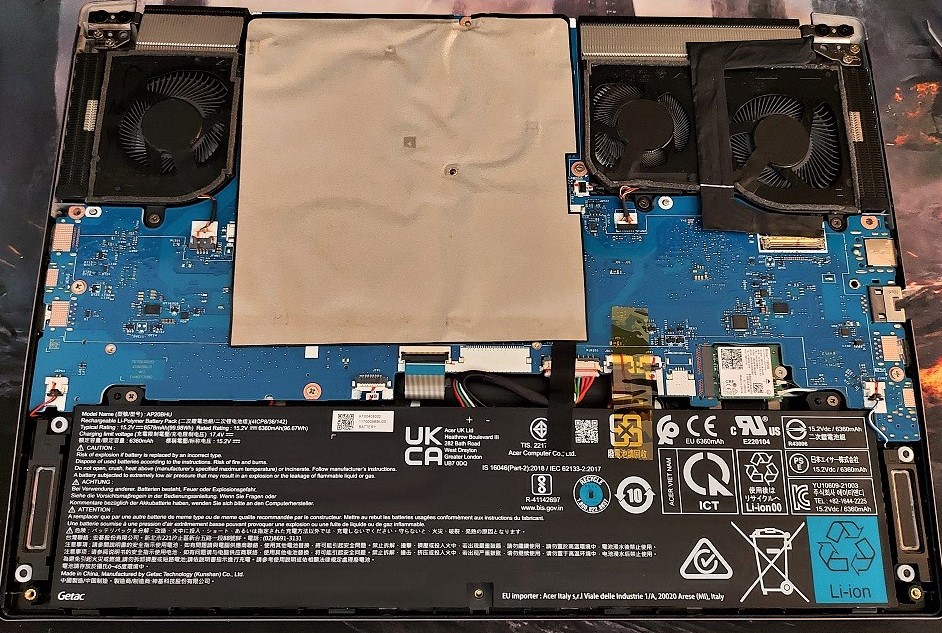
Keyboard and trackpad
The Acer Predator Triton 500 SE has a tenkeyless layout, with a small bank of hotkeys along the right-hand side. These include a quick-access Predator Sense button and dual assigned keys for volume/mute and media control.
The review unit we received has an American keyboard layout, so the ‘@, #, £, ¬’ and a few other keys weren’t where I’m used to, but aside from that, it’s an instantly familiar layout. There’s a whole suite of easy to remember and identify FN shortcuts for controlling the laptop’s features, which should make it easily accessible for anyone familiar with notebooks.
There is no per-key RGB lighting, but the keyboard has a three-zone assignable backlight which can be configured with static colours or a handful of dynamic modes. The keys are clearly visible with the backlight off, but with the backlight on the translucent lettering allows a good amount of light through, making them easy to identify whatever the lighting condition.
The actual typing experience is excellent. The keys have a quietly clicky actuation, with plenty of travel and consistent and reliable response. It’s very well suited to both gaming and productivity, and aside from missing a dedicated number pad, it’s hard to find fault with this keyboard.
The spacious touchpad is responsive from edge to edge and very smooth, enabling effortless swipes, pinches and scrolls. Like the Triton 300 SE, there is also an integrated fingerprint sensor in the corner of the touchpad; the sensor was incredibly reliable, and during the few weeks I had the Triton 500 SE it unlocked with a single attempt on all but one occasion, and that was down to me resting my finger on it awkwardly.
I wasn’t sure the fingerprint scanner was worth it on the Triton 300 SE, but given how effortlessly it works on the Triton 500 SE I have to wonder if I didn’t scan my print accurately before. Regardless, it’s an incredibly quick, secure and convenient way to unlock this laptop
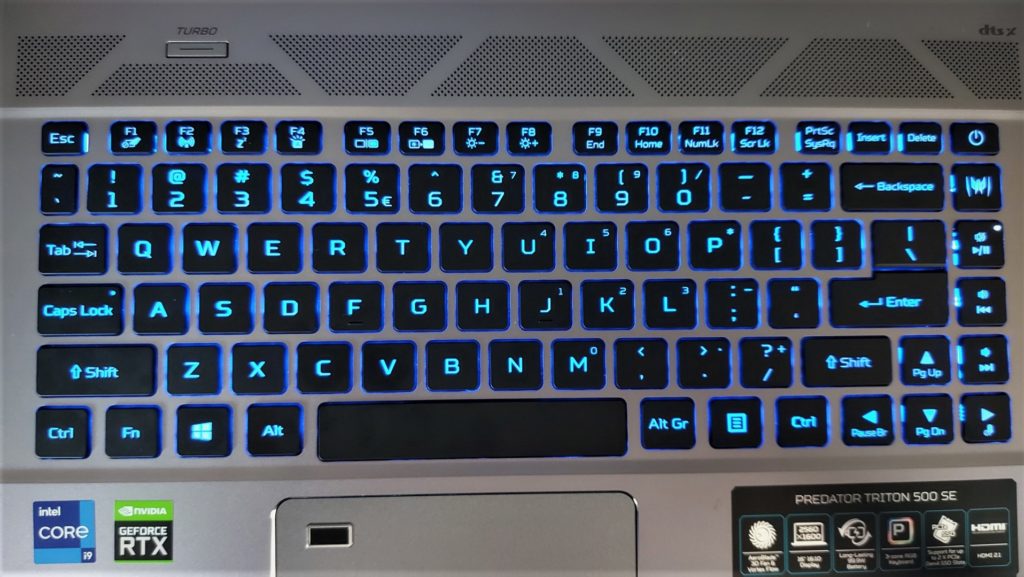
Connectivity and I/O ports
The selection of ports on the Triton 500 SE is excellent, with the bonus of an additional and not often seen full-size SD card reader. There is an HDMI 2.1 port, two USB-A ports that support high-speed USB 3.2 Gen2, two USB-C Thunderbolt 4 ports with DisplayPort alt mode and 100W charging functionality, an RJ-45 ethernet port, a 3.5mm combi-jack for headsets/headphones and the aforementioned SD card reader.

On the left of the Triton 500 SE is the power connector, RJ-45 ethernet port, USB 3.2 Gen2 Type-A (quick charge), a USB-C Thunderbolt 4 port and the 3.5mm combi-jack for headsets/headphones.

On the right side is an SD 7.0 card reader, USB 3.2 Gen2 Type-A, USB-C Thunderbolt 4 port and HDMI 2.1.
In addition to the Gigabit Killer Ethernet connection, there is also a Killer AX1650i (802.11ax) network card for WiFi-6 connections. We’ve tried this WiFi card on lots of laptops before, and the performance is excellent. The Killer control centre also has some excellent tools for prioritising network traffic, limiting bandwidth, analysing your WiFi signal and even acting as a network range extender. It also has Killer DoubleShot Pro functionality, which automatically switches high priority traffic to your faster network connection (Ethernet or Wireless) and sends standard traffic over the slower connection. This ensures latency-sensitive gaming and voice traffic will always be put on the fastest, most reliable link.
Display
The Triton 500 SE has a display well suited to gaming. Full sRGB gamut coverage is welcome, and it has great colour accuracy, very high peak brightness, clear off-axis viewing, and importantly for gamers, superb motion handling.
In its factory calibration, the display covered 99% sRGB, 74% AdobeRGB and 74% DCI-P3. This allowed the display to produce rich and vibrant colours, without any oversaturation, and with an average Delta-E (colour accuracy) of 0.42 which is superb. Colour warmth was a touch on the cool side, measuring 7600K at full brightness, but this was easily brought down by reducing the levels of green and blue within the settings.
The native gamma measured 2.3, which is just behind the ideal 2.2 gamma curve, which results in a picture that is slightly darker than when calibrated. Viewing angles were excellent, with the image clearly visible from sharp angles, retaining colour vibrancy and contrast well when viewed off-centre. Uniformity was acceptably consistent across the display, but there was a small amount of backlight bleed, evidenced by the higher than average black level of 0.47 cd/m². This was more than likely a byproduct of the incredible peak brightness of 570 cd/m² – with display brightness set to 200 cd/m² for nighttime viewing, the black level dropped to an excellent 0.20 cd/m².
This intense brightness allowed the Triton 500 SE to achieve a peak contrast level of 1150:1, which is slightly above average for an IPS display. When you factor in the excellent colour vibrancy and brightness, the Triton 500 SE’s display looks fantastic whether you are gaming in a bright office or in a darkened room.
The panel’s motion handling was outstanding, with tests showing no discernible ghosting, no smearing and no overshoot. I repeated these tests again before writing the review, and try as I might, I couldn’t detect any flaws. It’s even more impressive when you are actually gaming, as images are pin-sharp and super-smooth.
Our review unit had a 165Hz WQXGA display, but it is also available with a 240 Hz variant. If you exclusively play esports titles at high frame rates then it will be ideal for you, but if you like AAA single-player experiences, the 165 Hz is well-suited to the performance, and if it’s available for less money it would be my choice.
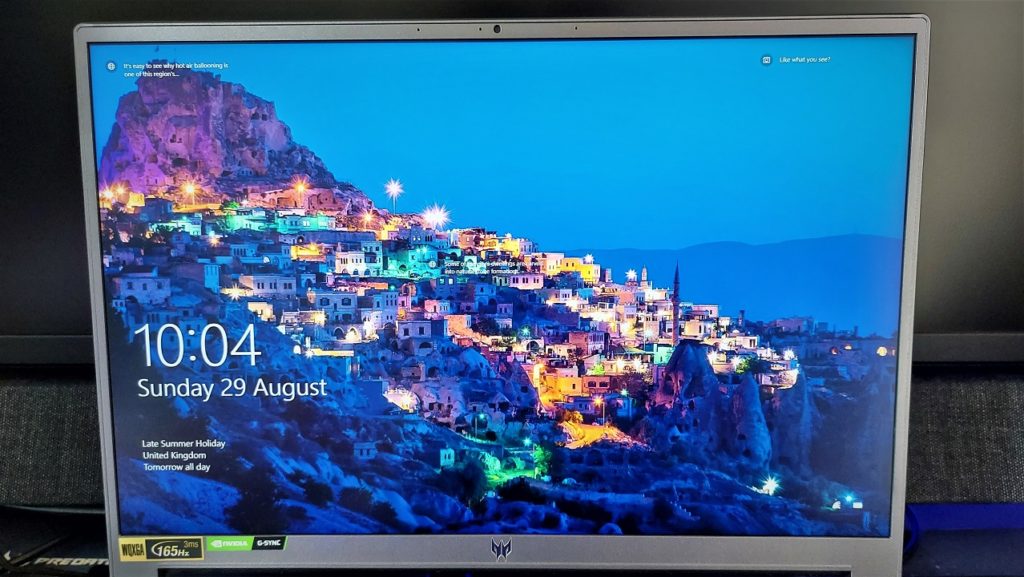
Performance
For day to day productivity and creativity workflows, the Triton 500 SE absolutely crushes it.
You also have the advantage of being able to connect three external displays: two via USB-C DP alt mode, and another via HDMI 2.1, for a total of four displays including the laptop’s panel. As someone who loves running multiple screens for multitasking and gaming, the Triton 500 SE has enough grunt to pull it off (as long as you aren’t trying to run three 4k displays).
I was especially interested to see how well the 11th Gen Intel i9 CPU compared with the AMD 5000 series CPUs we’ve tested. It’s widely accepted that the desktop variants of the Ryzen CPUs generally have better performance, but how about their mobile equivalents?
Well, based on our review samples, they are incredibly evenly matched. Results in the PCMark 10 and Cinebench tests put the Triton 500 SE just behind its AMD Ryzen 9 equipped competitors and significantly ahead of the 10th Gen Intel processors (including crushing the desktop i7-10700K and coming remarkably close to a system with a desktop i9-10900K and 128GB RAM).
The Ryzen CPUs in the Zephyrus G15 and Strix Scar 15 perform marginally better in productivity tasks (we’re talking tiny percentages), but when it comes to gaming, and paired with similar RTX 3080 GPUs, the i9-11900H Triton 500 SE actually surpasses the Ryzen in a lot of our real-world gaming benchmarks.
Acer’s Predator Triton 500 SE has the 8GB variant of the RTX 3080, which has a TGP of 110W, which is roughly in the middle of the RTX 3080’s range of 80-150W. At the Triton’s native WQXGA resolution of 2560*1600, there was no problem hitting 60 fps, and many games reached well into triple digits. Plugged into an external display, it even handles 4k gaming quite well, making it an excellent portable gaming powerhouse that can be brought to the big screen when you are at home.
There were a couple of additional games I tested that didn’t make it into our comparisons, due to having used settings that weren’t directly comparable: CS:GO clocked frame rates in excess of 300 fps at the native resolution; CoD Warzone with a few tweaks was breaching 200 fps; Cyberpunk 2077, with a few optimisations, hit a solid 60 fps with RTX on; and Flight Simulator managed 60 fps at 1600p.
Overall the Triton 500 SE performs well above expectations, so whether you prefer cinematic adventures or fast-paced competitive games, it will serve you very well. The CPU has enough poke to drive high frame rates, while the GPU can handle even the most graphically intensive games. If you are paying this much for a laptop, you want to be reassured that it will last for many years to come, and I’m confident the Triton 500 SE will keep churning out playable frame rates long after you even consider needing an upgrade.
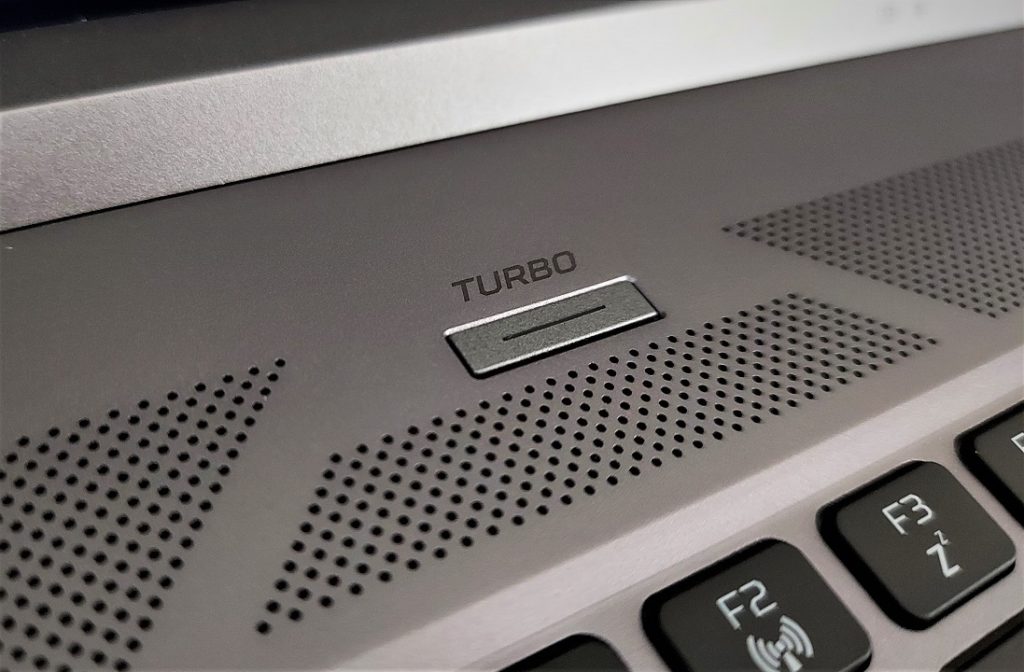
Benchmarks
All benchmark tests were carried out with the performance mode set to Turbo in the PredatorSense software, which overclocks the GPU and runs the CPU at its maximum, with the three fans spooled up to full speed (Extreme mode is a lot quieter and only lowers the frame rate by a few FPS, making it the best option for most gaming sessions.)
In-game settings use the Ultra preset (or equivalent) where available. If DLSS was available, it was set to performance mode unless stated otherwise. (If an RTX game comfortably runs above refresh rates you are happy with, we recommend switching DLSS to Quality, as it makes a noticeable difference to image clarity.)
Comparison results were recorded using a 4k 144Hz external display, connected via HDMI 2.1. The native resolution is slightly higher than 1440p due to the 16:10 aspect ratio, which would have made it less accurate for our comparisons. At native resolution, and because of the lack of advanced Optimus or a MUX switch, the results were around 10-15% lower than the comparison results at 1440p. For parity, all comparison results were recorded under identical conditions, using an external display.
Gaming Benchmark Results
Gaming performance comparisons
We’ve listed a range of similar computers for comparison, including the Zephyrus G15, which also uses the 8GB RTX 3080, and last year’s Triton 500 with an RTX 2080 Super.
| Laptop/PC | ASUS ROG Strix Scar 15 | Acer Predator Triton 500 SE | ASUS ROG Zephyrus G15 | ASUS ROG Strix G15 | Acer Predator Triton 500 |
| Model | G533QS-HQ132T | PT516-51s | GA503QS-HQ003T | G516QR-HF010T | PT515-52 |
| Processor | R9 5900HX | i9-11900 | R9 5900HS | R7 5800H | i7-10875H @ 2.31GHz |
| GPU | RTX 3080 16GB | RTX 3080 8Gb | RTX 3080 8GB | RTX 3070 8GB | RTX 2080 Super 8GB |
| GPU TGP/TDP | 115W/130W Dynamic Boost | 110W | 80W/100W Dynamic Boost | 115W/130W Dynamic Boost | |
| Ram | 32GB DDR4-3200 (16+16) | 32GB DDR4-3200 | 32GB DDR4-3200 | 16GB DDR4-3200 | 32GB DDR4-3200 (16+16) |
| SSD | 2 x 1TB M.2 NVMe SSD | 2 x 1TB M.2 NVMe SSD | 1TB M.2 | 1TB M.2 | 1Tb M.2 NVMe SSD |
| Display | 1440p 165Hz Pantone | 2560*1600 165Hz | 1440p 165Hz | 1080p 300Hz IPS | 1080p 300Hz G-Sync |
| Price | £2,699 | £2,699 | £2,599 | £1,699 | £2,199 |
System Benchmark Results
Cinebench R15
- CineBench – CPU (Single)(cb)
- (High-performance mode / Auto Fan): 218 cb
- CineBench – CPU (Multi)(cb)
- (High-performance mode / Auto Fan): 2049 cb
- CineBench – GPU (OpenGL)
- (High-performance mode / Auto Fan): 169.86 fps
Cinebench R20
- CineBench – CPU (Single)
- (High-performance mode / Auto Fan): 559
- CineBench – CPU (Multi)
- (High-performance mode / Auto Fan): 4913
Cinebench R23
- CineBench – CPU (Single)
- (High-performance mode / Auto Fan): 1455
- CineBench – CPU (Multi)
- (High-performance mode / Auto Fan): 12391
3DMark – Time Spy (DX12)
| ASUS ROG Strix Scar 15 | Acer Predator Triton 500 SE | ASUS ROG Zephyrus G15 | ASUS ROG Strix G15 | ||
| 3DMark – Time Spy (DX12) | Time Spy Score | 11125 | 10309 | 10232 | 10379 |
| Graphics | 11440 | 10428 | 10383 | 10703 | |
| CPU | 9626 | 9683 | 9454 | 8860 |
3DMark – Fire Strike (DX11)
| ASUS ROG Strix Scar 15 | Acer Predator Triton 500 SE | ASUS ROG Zephyrus G15 | ASUS ROG Strix G15 | ||
| 3DMark – Fire Strike (DX11) | Fire Strike Score | 23835 | 22687 | 21547 | 23101 |
| Graphics Score | 26593 | 26800 | 23701 | 26147 | |
| Physics Score | 25494 | 23877 | 23521 | 24053 | |
| Combined Score | 12709 | 10194 | 11921 | 11953 |
PCMark 10
| ASUS ROG Strix Scar 15 | Acer Predator Triton 500 SE | ASUS ROG Zephyrus G15 | ASUS ROG Strix G15 | ||
| PCMark 10 | PCMark 10 | 7175 | 6956 | 7062 | 6875 |
| Essentials | 10383 | 9499 | 10382 | 10108 | |
| App start-up | 15198 | 12005 | 15095 | 14665 | |
| Video Conferencing | 7891 | 7921 | 7921 | 7732 | |
| Web Browsing | 9336 | 9015 | 9360 | 9108 | |
| Productivity | 9744 | 9743 | 9646 | 9257 | |
| Spreadsheets | 11205 | 12908 | 10997 | 10641 | |
| Writing | 8474 | 7335 | 8461 | 8054 | |
| Content Creation | 9909 | 9869 | 9543 | 9423 | |
| Photo Editing | 16185 | 14191 | 15295 | 15397 | |
| Rendering & Visualisation | 11699 | 11734 | 11151 | 11414 | |
| Video Editing | 5139 | 5774 | 5096 | 4762 |
Bright Memory Infinite RTX Benchmark
| ASUS ROG Strix Scar 15 | Acer Predator Triton 500 SE | ASUS ROG Zephyrus G15 | ASUS ROG Strix G15 | ||
| Very high, DLSS: quality | 1080p | 70 | 69 | 62 | 64 |
| 1440p | 44 | 41 | 40 | 35 | |
| 2160p | 21 | 20 | 18 | 19 | |
| High, DLSS: performance | 1080p | 107 | 107 | 94 | 97 |
| 1440p | 72 | 70 | 64 | 65 | |
| 2160p | 37 | 36 | 31 | 35 |
Storage
The 2x1TB M.2 NVMe Samsung SSDs in Raid0 arrangement are, by a huge amount, faster than any SSDs we’ve ever tested. Acer always chooses excellent SSDs for its PCs, but for the Triton 500 SE, they’ve gone above and beyond. This equates to consistently fast speeds, very short loading times and excellent system responsiveness. Playing online games like PUBG or Destiny 2 I was dropped in and ready to go in mere seconds, while the rest of my party were still waiting for their games to load.
Sequential read and write speeds of 12,904 MB/s and 10,067 MB/s respectively are outstanding, setting a new high-bar in our system benchmark results. This translates into stupendously fast loading times in games, near-instant system responsiveness and rapid boot times.
Cooling
Taking into account that this is a thin gaming laptop, Acer has done a decent job at keeping temperatures under control. The GPU in particular is able to run harder for longer, thanks to having two fans dedicated to keeping it cool. The CPU has quite a high average temperature, even during basic tasks like browsing and watching videos, but the peak temperature stayed below 100℃ during spikes in activity, preventing thermal throttling.
The surface temperatures are quite high, but the majority of the heat escapes from the rear of the system. The area around the main gaming keys and palm rests gets a little warm, but never hot, making it comfortable for extended gaming sessions.
Turbo mode can give you a couple of extra frames in comparison to Extreme mode, but the level of GPU overclocking is the same and the CPU runs to the same peaks. The only difference between these modes is that the fans are reactive in Extreme mode, whereas in Turbo they are permanently spooled up at full speed, which is very, very loud. We used Turbo in our benchmarks, but when actually gaming I just used Extreme, as the fans were audible both over my microphone and through my headset.
In quiet mode, the laptop is indeed a bit quieter, but unlike other systems, where you rarely have the fans spool up if you are watching a video, the Triton 500 SE had a constant quiet hum from the fans.
Given the high idle CPU temperatures, I do wonder if this is an anomaly as a result of our review unit having been put through its paces by other reviewers. If any of you own this laptop, I’d be interested to see your results, and whether these temps are a result of the design or just restricted to this review unit. Were this my laptop, I’d definitely try reapplying the CPU’s thermal paste, but that level of tinkering is generally frowned upon when reviewing laptops. An alternative would be under-volting the CPU like can be done with ASUS gaming laptops, but unfortunately, there is no factory tool for doing this.
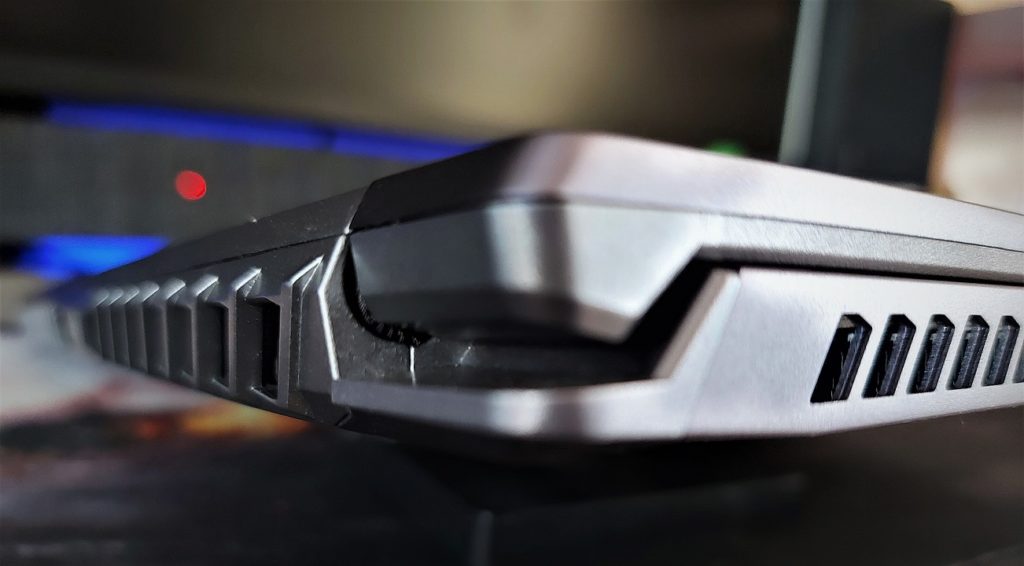
Battery life
Considering the Triton 500 SE has a 99.9W battery, I expected better battery life to be much better. Watching 1080p video played back from an external hard drive in flight mode and with the display at 200 nits, we only got around 3 hours of battery life. For standard productivity and browsing, we used PCMark 10 running on a loop and averaged around 2.5 hours on a full charge. Gaming puts greater demand on the battery, resulting in just one hour of play at 50% brightness, with the framerate capped at 60fps.
There is a slight quirk in that if there is less than 40% battery remaining, you can’t change the performance mode, even if it’s plugged into the mains, and the mode can’t be changed at all on battery power. While this won’t bother most people, if you take it to a meeting or lesson, it could be annoying having the fans spooling up and being unable to switch to quiet mode. Additionally, the performance mode reset itself to default on battery, meaning you can’t use quiet mode on battery power, which is a bit of an oversight.
Charging from empty to full is quite slow; it took nearly two hours to charge from 10% back to full. The Triton 500 SE does support USB-C charging at up to 100W and can be topped up with power banks, via monitors that support power delivery, or even a mobile phone charger, but this is likely to be very slow.
Overall the battery performance was very underwhelming. Like the temperatures, it’s so far away from what I expected that I’m left wondering if this is a result of the laptop being put under stress by numerous reviewers running their own benchmarks. Regardless, I can only call it as I see it, and these results were disappointing.
If you plan to use your laptop primarily connected to the mains or for short spells away from a plug, then the battery life won’t be an issue. If you rely on all-day power, however, the Triton 500 SE may end up letting you down.
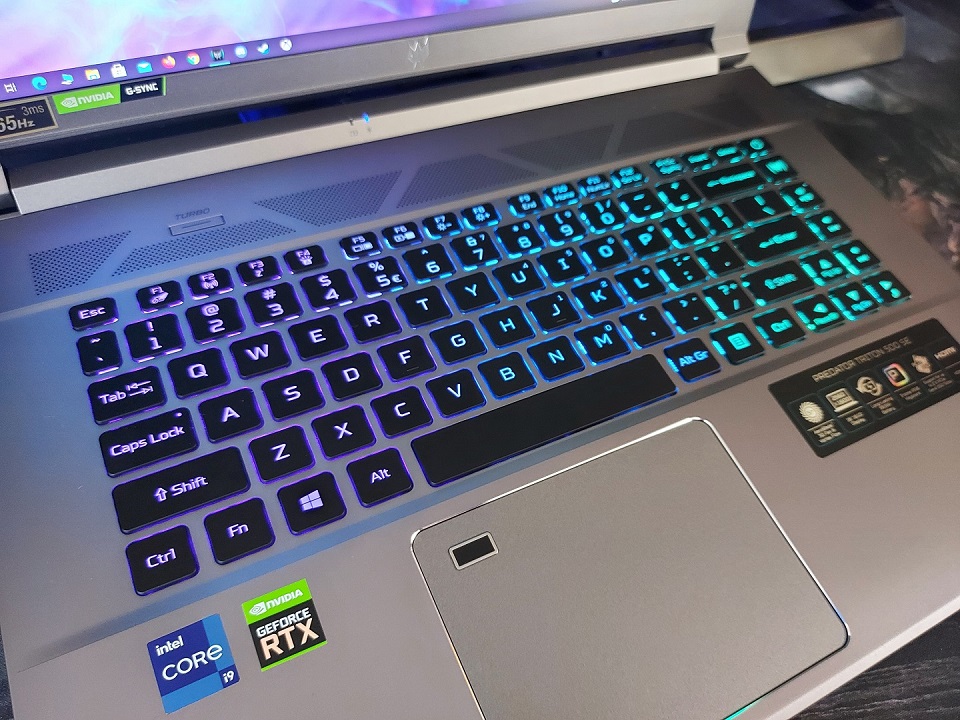
Pricing and alternatives
At £2,699, the Triton 500 SE is priced similarly to other top-tier systems. The ASUS ROG Zephyrus G15 is closest in terms of performance while paired with an understated design, but the Triton 500 SE wins out on overall ability. If you just want an all-out games machine, ROG’s Strix Scar 15 costs the same price but comes with a mechanical keyboard and oodles of RGB, including per-key lighting.
If you don’t need that much power, the Acer Predator Triton 300 SE is slightly smaller and lighter while sharing the same stylish aesthetic, and can be picked up for just £1,399. Meanwhile, if you just want gaming performance without breaking the bank, the ASUS ROG Strix G15 with Ryzen 7 5800HS and an RTX 3070 costs just £1,699 for performance that is only slightly behind the big-hitters.
At the time of writing it’s difficult to find the Triton 500 SE in stock with the i9 and RTX 3080, though it can be found at a great price with an 11th Gen i7 and RTX 3070. Given the thermals are quite high in the spec we received, switching to the slightly lower spec should suit the slimline case well, keeping temperatures down without affecting frame rates too much.
Summary
There’s no doubting the gaming credentials of the Triton 500 SE, and it performs brilliantly well both on esports titles and AAA games with demanding graphics. The styling is restrained but stylish, the display is spectacularly bright and colourful, and the all-around performance is superb. Temperatures are a little on the warm side but not so high as to be of concern, and the battery life is underwhelming, but aside from that this is a potent bit of hardware.
When you factor in the quality of life additions such as the uber-fast PCIe Gen 4 SSDs, excellent network card, SD 7.0 card reader, HDMI 2.1 and dual Thunderbolt 4 ports, the Triton 500 SE deserves a spot near the top of your shortlist.
